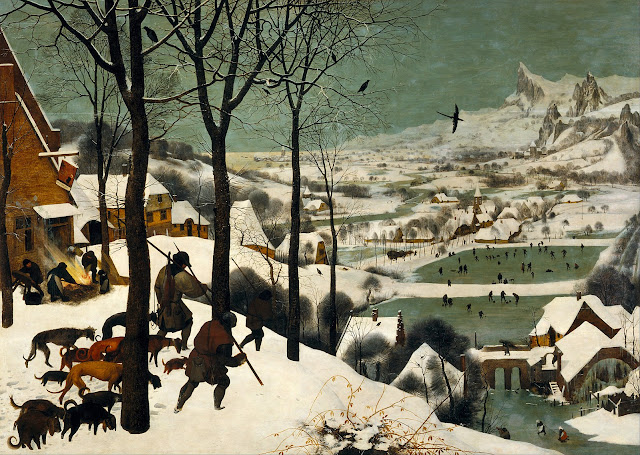The Hunters in the Snow by Pieter Bruegel the Elder (Interpretation and Analysis)
 |
| The Hunters in the Snow Source: Wikimedia Commons |
The Hunters in the Snow is one of his most famous paintings. It depicts a small village awash in white, fluffy snow. In the foreground, a group of hunters return from their work accompanied by a pack of curly-tailed dogs. They walk downhill toward the village, where some of the townspeople are at work while others skate on the ice. In the background, craggy mountains loom over the scene. The painting is rich in detail, executed with loving and painstaking precision.
On the surface, The Hunters in the Snow seems to be a straightforward, secular painting. However, taken in the context of Bruegel’s life, it is a wistful, almost sad piece of art. The painting was created in the 1560s, a time of religious upheaval and war in Europe. Given the circumstances, The Hunters in the Snow in no way reflects the world that existed outside Bruegel’s window. Instead, it is a nostalgic look at a world that no longer existed, a calm and peaceful life in a simple village.
Although The Hunters in the Snow doesn’t depict a perfect world (considering the hunters are returning from a poor hunt on a freezing day), it does capture an orderly life centered around the village community. Here, we see the townspeople joining together to engage in winter activities in perfect harmony. While such a life could be nothing other than imaginary, the end result is a quintessential image of winter, one that continues to be popular and meaningful to this day.
Disclaimer: I’m not an art historian or an expert on this topic. The above is my opinion, based on my interpretation of my foreknowledge of art and history. If I’ve done any additional research, I’ll note it above.



Comments
Post a Comment